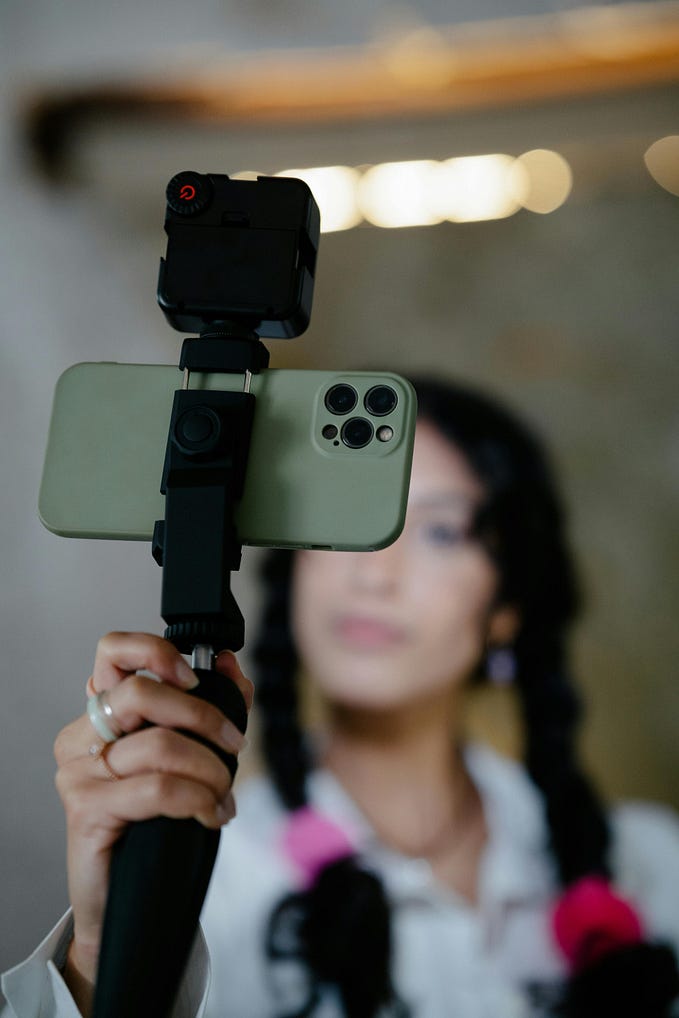Glossier President & CFO Henry Davis on Building a Passionate Community

In 2013, Henry Davis was a venture capitalist with a “strong thesis” that direct-to-consumer (DTC) companies were the future of ecommerce; flash forward to today, and Davis is President and CFO of Glossier, Emily Weiss’s multi-million-dollar beauty venture, which Bloomberg recently covered as “shaking up” the $445 billion global beauty market.
“Retail has become discount warfare,” Davis said at a recent Female Founders Fund CEO Breakfast. “The products and brands that make up retail are the collateral damage in the battle royale for the survival of retail.” By selling their products retail — either in stores or through mass retailers online — brands are faced with two issues: the products become overly discounted and lose a sense of value, or they lose a part of their identity through the consumer’s experience of opening a brown paper package, wrapped like every other item they receive in the mail.
“That makes products things. They’re not branded, they’re not experiences, they don’t feel special anymore,” Davis said. “That’s a problem for anyone who wants to have brands. I don’t think people see [this problem] because they’re still absorbed by this distribution win of ecommerce. But over time, that’s going to erode any competitive advantage that a lot of these old-school brands have built, and so that’s the opportunity for brands like [Glossier].” In other words, Glossier’s attention to detail around the experience of receiving the product (i.e. pink bubble wrap pouches and stickers) makes a huge difference to the consumer. Going DTC also offers a unique opportunity to leverage the community around the brand, because when the transactions are made outside marketplaces like Sephora and Amazon, brands hold 100% of their customers’ attention.
“Brands will be created by the ability to use the channel to engage people in the creation of the brand,” Davis said. Using the built-in following around Weiss’s Into the Gloss blog, Glossier created a feedback loop between the brand and the consumer — asking for feedback on existing products and engaging consumers on the creation of new ones. “We’re not making things and working out how to sell them to people, we’re working out how to get people to tell us what to make for them, both brand and product.” Clearly, they’re doing something right.
These are Davis’s four tips for building an engaged community around a DTC brand:
1. Make the Consumer Feel Seen
According to Davis, millennials tend to be typecast as delusional and entitled, but they’re also frustrated by being typecast by an older generation that fundamentally misunderstands them. For years, the beauty industry has relied on messaging that made consumers feel bad about themselves, i.e. “your lips aren’t full enough, you’re not thin enough” etc. Instead, millennials are looking to be “welcomed, and included, and a part of something. The brands of the future recognize that and make people a part of something.” Glossier’s messaging relies on making the consumer feel good about themselves; its fragrance “You” was marketed by a campaign telling women they already smell great. Recently, Davis spoke at the Cannes Lions festival, where the CEO of SoulCycle and the head pastor of Hillsong appeared in conversation. Though SoulCycle and Hillsong may not sound similar right away, the overlaps soon became clear. “It’s a Sunday morning and you’re at one of these places, there’s someone on a raised pedestal, preaching, and you’re surrounded by people you relate to. You’re part of a community, you’ve got shared beliefs, and you feel like a part of something. That’s the branded future.”
2. Create Spaces for Conversation
“Technology allows you to have individual and community relationships at scale that transcend physical limitations, which is really cool,” Davis shared. This emphasis on technology is core to the Company’s future and one of the key differentiators behind its success. Davis shared more behind the strategy and culture at Glossier, “We’re a beauty business, but we’re a technology company. Our biggest team by far is technology — it’s over a third of our employees because we need to build the tools for conversations.”
Davis predicts that over time people with similar interests will want a simpler, safer space where authentic conversations can flourish and members of a community can engage one another. Format is key here because the types of conversations and the depth of those connections vary so much platform to platform. But once you make a space for these conversations, they will happen. “For example, we have a Slack group for our top thousand customers and they go out, they’re all friends. They organized a field trip to the Byredo store,” Davis said, explaining that the group is so active, they send something like 11,000 messages per week.
“Understand what the right format is, build it [internally], and allow people to connect, because that’s the key,” Davis continued. “Allow the conversations to happen and allow people to connect with other people. Not only do you bind those people closely to the brand and the product, but you also have the ability to learn [from these interactions].”
3. Use Your Community as A Focus Group
One example of this is the Top Shelfie challenge on Into the Gloss, where Glossier asked followers to submit photos of their medicine cabinets. As a result, the team realized cleanser was absent from most of the medicine cabinets, so they asked the community “a bunch of questions, including who would play them in a movie,” in hopes of developing a cleanser that represented the brand’s audience. “Eddie Redmayne and Emma Stone won by a landslide, these redheads with milky pale skin, which suggested something to us about how people want sensitive, friendly, very delicate,” Davis said. “We also learned that people [used two products], makeup remover and face wash. What we came up with was Milky Jelly cleanser. ‘Milky Jelly because it’s got this light, sensitive feel, but it’s dual use. You can use it dry as makeup remover or wet as a face wash.” From there, Glossier invited members of their community to test it, and once it was finished, they sent them the product and thanked them for participating in the product development process. “Those people are still the ones telling their friends they were first.” On Instagram and Into the Gloss, Glossier asks their community open-ended questions, and a human reads every single answer, because Davis believes in a data-driven approach with human analysis, using data tools to synthesize information, and people with qualitative reasoning to interpret the data.
4. Give Your Community a Physical Space, Too
Davis finds showrooms fascinating and visits them often, to see how consumers are interacting with the brand IRL. “We launched our showroom on a $35,000 buildout budget, the logic behind it was, ‘we need a place for people to come, it’s the ultimate expression of community.’” Glossier does not want consumers to feel excluded, but instead, welcomed. “People would come and hang out, and that’s true, but when they come and hang out, they buy stuff, so it worked out to be incredibly successful.” Some of Glossier’s DTC peers see the difference in profit and are building several stores across the country, but Glossier “feels that online is so important, we don’t want to distract from that. We’re going to have showrooms, but we’re not going to do 25, because the point is not [stores]. We’d rather be patient and build the thing that’s going to be the future.”
Overall, the Glossier team is constantly asking themselves, “How do we get people involved, how do we get people to become stakeholders in what we’re doing?” Because once consumers become stakeholders, they’re invested enough in the brand to care whether or not it succeeds. The thousands of people involved in the development of Milky Jelly Cleanser are still telling their friends they were early adopters of the brand that has come to define the millennial generation’s standards around the way we think and talk about beauty. “Retail for us is all about community, not money,” Davis said, because Glossier places the highest premium on customer experience.
That’s the branded future.










